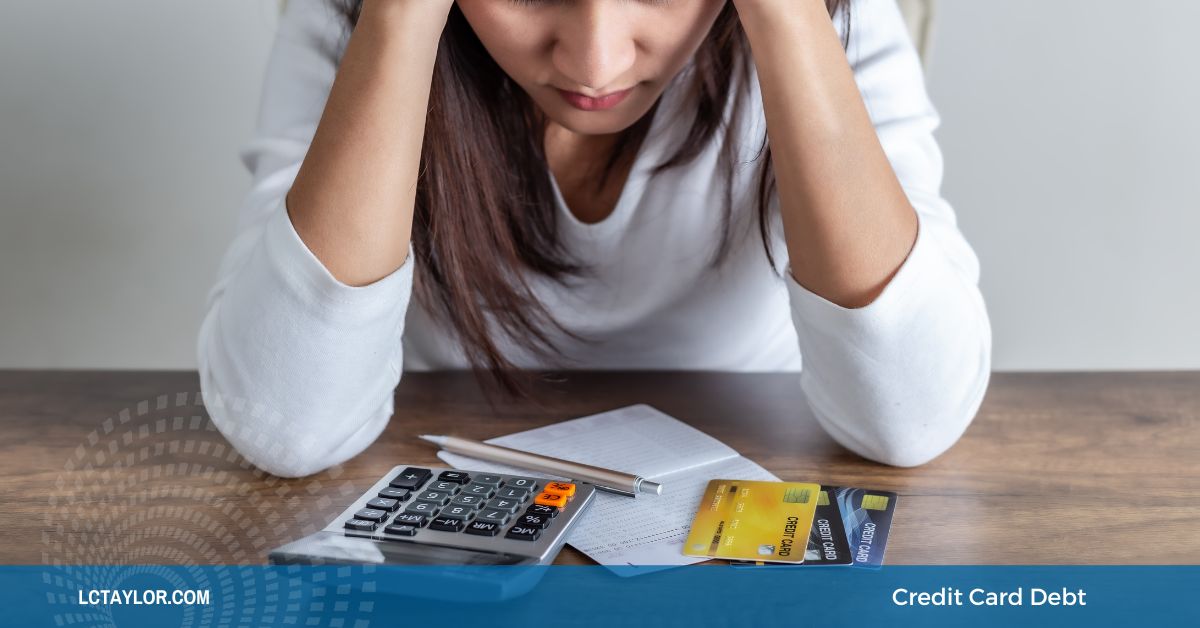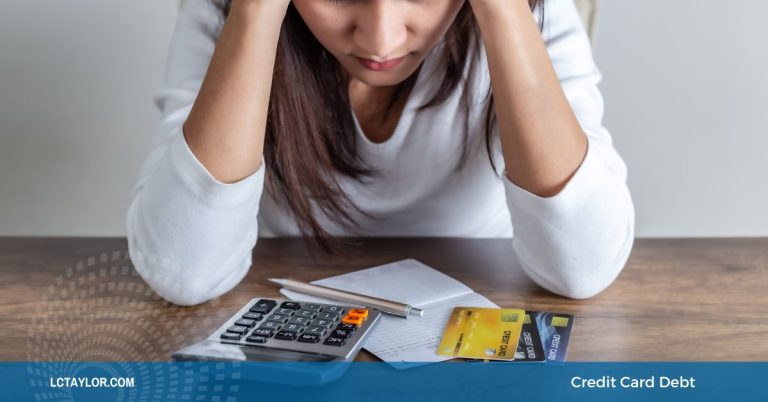We love our credit cards in Canada. They are convenient, offer access to immediate funds, and may give reward and loyalty options. Canadians have on average 2.4 credit cards per person, and the average monthly credit card debt is $ $4,681, as of the fourth quarter of 2024.
Unfortunately, this ease of use means almost half of Canadians carry high-interest debt each month. What’s even more concerning, experts suggest that consumers have used their cards to cover income shortfalls and cope with the increased cost of living. That can lead to a dangerous debt cycle.
If you’re in such a situation, keep reading to learn how to break free from credit card debt.
Eliminating Credit Card Debt: Actions Steps
Credit card debt requires a clear plan. Here are some key steps to take:
Review your finances
First, find out where you are financially. Determine your income, your expenses, and all your debt payments.
Use those numbers to set a budget, and more importantly, to learn how much money you can put toward your credit card bills. If possible, reduce your spending to free up more cash for payments, and consider using a debit card more often.
Set a goal
Next, set some money milestones. When do you want to pay off your credit cards? If you owe money on more than one, you can choose different dates to have them paid off. An online calculator can determine payment amounts to become debt-free within your timeframe.
Choose a strategy
Third, pick a payment strategy. There are several options available:
- The snowball method: Pay off the smallest debt first, then apply the leftover cash to the next smallest debt. You earn a sense of accomplishment as you eliminate your debts.
- The avalanche method: Put as much money as possible towards the debt with a high interest rate. The idea is that you’ll save more money by paying off the most expensive payment first. Once completed, you can put the extra money towards other debts.
- Negotiate a lower interest rate: Contact your lender(s) and ask if they can offer you a lower interest rate for a fixed period or switch your balance to a lower-rate card.
- Balance transfer: Lenders sometimes offer cards with promotional rates as low as 0%. Take advantage whenever possible to reduce the time to pay off your balance, as more money can go towards your principal. Watch out—some rate promotions charge a transfer fee between two and five percent.
- Consolidation loan: Consolidate debt payments into a single loan. The interest rate is usually lower than the rates on credit cards, though to qualify, you must provide proof of income and have a good credit history and credit score.
Alternative Options
Sometimes, credit card debt can become too overwhelming. Here are some signs that you may be struggling to keep up:
- Missed or late payments: You cannot afford to make all your minimum monthly payment, or miss bill schedules entirely.
- Endless debt cycles: You rely on your credit card for all payments.
- Debt for more debt: You pay off a credit card with another credit card
- Collection calls: Collection agencies have started to contact you.
At this point, some more aggressive debt solutions can help
Negotiate with your creditors
If you have a good relationship with your lenders, see if you can change or alter your loan terms. You may be able to get a lower rate or have the company remove penalties and fees. Some offer a lump sum payment to clear your debt instead of the full amount. Or ask for a more manageable payment schedule.
Consumer Proposal
Talk to a Licensed Insolvency Trustee about a Consumer Proposal. It is a government-approved debt relief program that will give you one monthly payment and offer up to five years to repay your unsecured debt. Some find their debt load reduced by as much as 80%. Best of all, Consumer Proposals are legally binding, so creditors cannot chase you for payment. Note that a Licensed Insolvency Trustee, professionally licensed by the government, must file a Consumer Proposal on your behalf. The Consumer Proposal stays on your credit report for three years after the completion of your Proposal.
Bankruptcy
Bankruptcy is another government-approved debt relief program. Many people are hesitant to file as they believe they will lose all their assets or never recover. However, this is not true. Each province allows debtors to keep some assets when they file for Bankruptcy, and it will drop off your credit report six years after your discharge from Bankruptcy,
A Licensed Insolvency Trustee must also file for Bankruptcy on your behalf. Your creditors will write off your debts and you’ll begin with a clean slate. For a first time Bankruptcy, the process will be completed and you will be discharged from Bankruptcy between nine and 21 months after filing, depending on whether you have surplus income.
You typically must close your credit cards accounts if you get a consolidation loan, negotiate better terms with your creditors, file a Consumer Proposal, or file for Bankruptcy. If you still need one, you can use a prepaid credit card, which you pay before using, or apply for a secured credit card.
Where to Get Help With Credit Card Debt
Many Canadians struggle with debt management, especially when it comes to credit cards. If you’re in this situation, remember that you’re not alone. Our Licensed Insolvency Trustees at LCTaylor offer debt relief solutions. Contact us online or at 204-925-6400 for a free consultation. We are here to help you eliminate your debt and get back on track.

















